
Mark 16 is the final chapter of the Gospel of Mark in the New Testament of the Christian Bible. Christopher Tuckett refers to it as a "sequel to the story of Jesus' death and burial". The chapter begins after the sabbath has ended, with Mary Magdalene, Mary the mother of James, and Salome purchasing spices to bring to the tomb next morning to anoint Jesus' body. There they encounter the stone rolled away, the tomb open, and a young man dressed in white who announces the resurrection of Jesus. The two oldest manuscripts of Mark 16 conclude with verse 8, which ends with the women fleeing from the empty tomb, and saying "nothing to anyone, because they were too frightened".
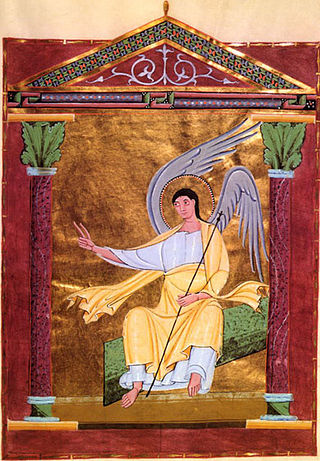
The empty tomb is the Christian tradition that the tomb of Jesus was found empty after his crucifixion. The canonical gospels each describe the visit of women to Jesus' tomb. Although Jesus' body had been laid out in the tomb after crucifixion and death, the tomb is found to be empty, the body gone, and the women are told by angels that he has risen.
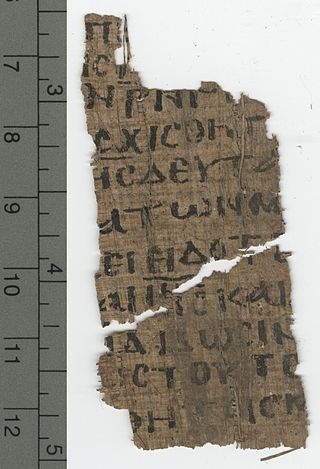
John 21 is the twenty-first and final chapter of the Gospel of John in the New Testament of the Christian Bible. It contains an account of a post-crucifixion appearance in Galilee, which the text describes as the third time Jesus had appeared to his disciples. In the course of this chapter, there is a miraculous catch of 153 fish, the confirmation of Peter's love for Jesus, a foretelling of Peter's death in old age, and a comment about the beloved disciple's future.
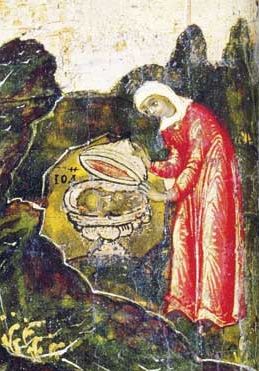
Joanna, the wife of Chuza, is a woman mentioned in the gospels who was healed by Jesus and later supported him and his disciples in their travels. She is one of the women recorded in the Gospel of Luke as accompanying Jesus and the twelve apostles and as a witness to Jesus' resurrection. Her husband was Chuza, who managed the household of Herod Antipas, the ruler of Galilee; this is the origin of the distinguishing epithet commonly attached to her name, differentiating her from other figures named Joanna or Joanne.

Mark 5 is the fifth chapter of the Gospel of Mark in the New Testament of the Christian Bible. Taken with the calming of the sea in Mark 4:35–41, there are "four striking works [which] follow each other without a break": an exorcism, a healing, and the raising of Jairus' daughter.

Matthew 28 is the twenty-eighth and final chapter of the Gospel of Matthew in the New Testament. This chapter records that Jesus is risen, describes the actions of the first witnesses to this event, and ends with the Great Commission.

Luke 24 is the twenty-fourth and final chapter of the Gospel of Luke in the New Testament of the Christian Bible. The book containing this chapter is anonymous, but early Christian tradition uniformly affirmed that Luke the Evangelist composed this Gospel as well as the Acts of the Apostles. This chapter records the discovery of the resurrection of Jesus Christ, his appearances to his disciples and his ascension into heaven.

Matthew 13 is the thirteenth chapter in the Gospel of Matthew in the New Testament section of the Christian Bible. Verses 3 to 52 of this chapter form the third of the five Discourses of Matthew, called the Parabolic Discourse, based on the parables of the Kingdom. At the end of the chapter, Jesus is rejected by the people of his hometown, Nazareth.

Luke 10 is the tenth chapter of the Gospel of Luke in the New Testament of the Christian Bible. It records the sending of seventy disciples by Jesus, the famous parable about the Good Samaritan, and his visit to the house of Mary and Martha. This Gospel's author, who also wrote the Acts of the Apostles, is not named but is uniformly identified by early Christian tradition as Luke the Evangelist.

Matthew 9 is the ninth chapter of the Gospel of Matthew in the New Testament and continues the narrative about Jesus' ministry in Galilee as he ministers to the public, working miracles, and going through all the cities and towns of the area, preaching the gospel, and healing every disease. This chapter opens with Jesus back in "his own town", i.e. Capernaum.

Luke 5 is the fifth chapter of the Gospel of Luke in the New Testament of the Christian Bible, traditionally attributed to Luke the Evangelist, a companion of Paul the Apostle on his missionary journeys. The chapter relates the recruitment of Jesus' first disciples and continues to describe Jesus' teaching and healing ministry. Early criticism from the Jewish religious authorities is encountered as the chapter progresses.

Luke 6 is the sixth chapter of the Gospel of Luke in the New Testament of the Christian Bible, traditionally attributed to Luke the Evangelist, a companion of Paul the Apostle on his missionary journeys. Jesus' teaching about the Sabbath enrages the religious authorities and deepens their conflict. The selection of twelve apostles is recounted and this is followed by the "Sermon on the Plain", where key aspects of Jesus' teaching are presented.
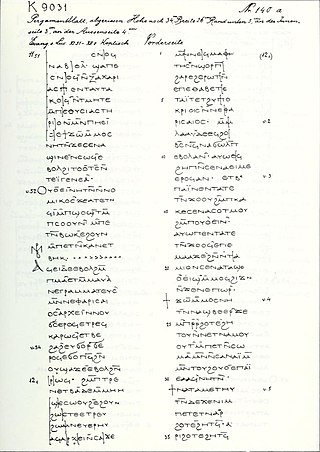
Luke 11 is the eleventh chapter of the Gospel of Luke in the New Testament of the Christian Bible. It records Luke's version of the Lord's Prayer and several parables and teachings told by Jesus Christ. The book containing this chapter is anonymous, but early Christian tradition uniformly affirmed that Luke the Evangelist composed this Gospel as well as the Acts of the Apostles.

Luke 12 is the seventh chapter of the Gospel of Luke in the New Testament of the Christian Bible. It records a number of teachings and parables told by Jesus Christ when "an innumerable multitude of people had gathered together", but addressed "first of all" to his disciples. The book containing this chapter is anonymous, but early Christian tradition uniformly affirmed that Luke the Evangelist composed this Gospel as well as the Acts of the Apostles.

Luke 14 is the fourteenth chapter of the Gospel of Luke in the New Testament of the Christian Bible. It records one miracle performed by Jesus Christ on a Sabbath day, followed by his teachings and parables, where he "inculcates humility ... and points out whom we should invite to our feasts, if we expect spiritual remuneration". The book containing this chapter is anonymous, but early Christian tradition uniformly affirmed that Luke the Evangelist composed this Gospel as well as the Acts of the Apostles.

Luke 15 is the fifteenth chapter of the Gospel of Luke in the New Testament of the Christian Bible. The book containing this chapter is anonymous, but early Christian tradition uniformly affirmed that Luke the Evangelist composed this Gospel as well as the Acts of the Apostles. This chapter records three parables of Jesus Christ: the lost sheep, the lost coin and the lost or 'prodigal' son, a trilogy about redemption that Jesus tells after the Pharisees and religious leaders accuse him of welcoming and eating with "sinners".

Luke 21 is the twenty-first chapter of the Gospel of Luke in the New Testament of the Christian Bible. It records the observations and predictions of Jesus Christ delivered in the temple in Jerusalem, and his exhortation "to be watchful". The book containing this chapter is anonymous, but early Christian tradition uniformly affirmed that Luke the Evangelist composed this Gospel as well as the Acts of the Apostles.

Luke 23 is the twenty-third chapter of the Gospel of Luke in the New Testament of the Christian Bible. The book containing this chapter is anonymous, but early Christian tradition uniformly affirmed that Luke the Evangelist composed this Gospel as well as the Acts of the Apostles. This chapter records the trial of Jesus Christ before Pontius Pilate, Jesus' meeting with Herod Antipas, and his crucifixion, death and burial.

In Eastern Orthodox Christian tradition the Myrrhbearers are the individuals mentioned in the New Testament who were directly involved in the burial or who discovered the empty tomb following the resurrection of Jesus. The term traditionally refers to the women who came with myrrh to the tomb of Christ early in the morning to find it empty. Also included are Joseph of Arimathea and Nicodemus, who took the body of Jesus down from the cross, anointed it with myrrh and aloes, wrapped it in clean linen, and placed it in a new tomb. In Western Christianity, the women at the tomb, the Three Marys or other variants are the terms normally used.
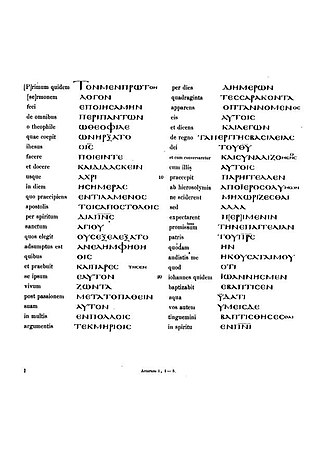
Acts 1 is the first chapter of the Acts of the Apostles in the New Testament of the Christian Bible. The book containing this chapter is anonymous, but early Christian tradition affirmed that Luke composed this book as well as the Gospel of Luke. This chapter functions as a transition from the "former account" with a narrative prelude, repeated record of the ascension of Jesus Christ with more detail and the meeting of Jesus' followers, until before Pentecost.





















